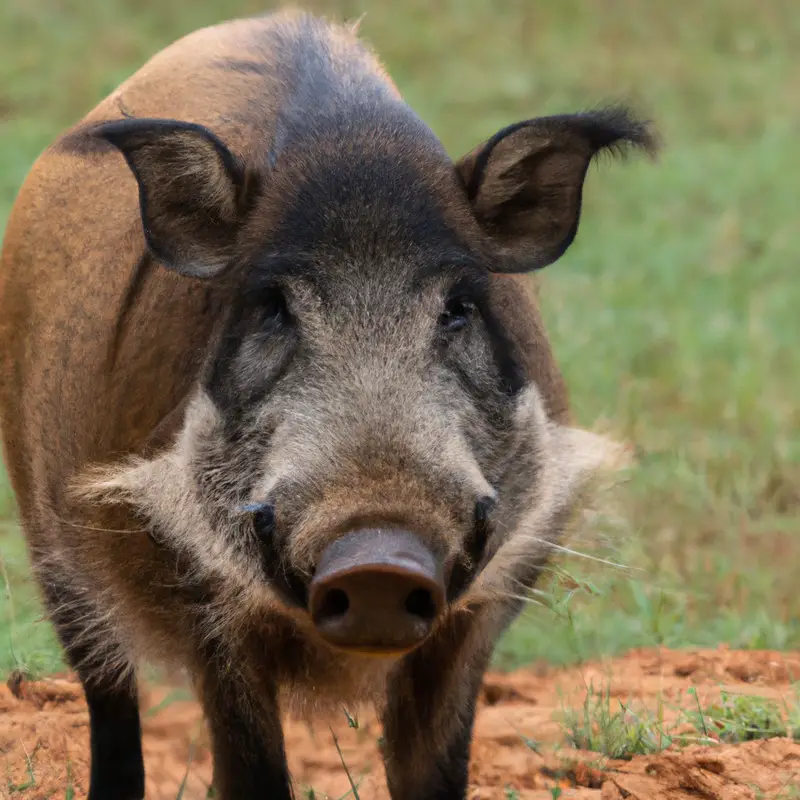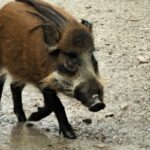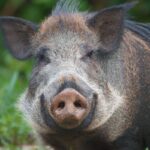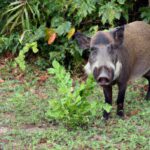Key Takeaways:
- Feral hog populations in Arkansas are rapidly increasing, causing significant ecological and agricultural damage.
- Hunting is an effective management strategy for controlling feral hog populations in Arkansas and mitigating the associated problems.
- Arkansas offers various hunting regulations and seasons for targeting feral hogs, allowing hunters opportunities throughout the year.
- Specialized equipment and techniques, such as night hunting and baiting, are commonly employed by hunters in Arkansas to increase effectiveness in capturing feral hogs.
Imagine yourself stepping into the dense forests of Arkansas, the scent of the wild filling your nostrils, as you embark on a thrilling journey to hunt feral hogs. These relentless creatures wreak havoc on the state’s ecosystems, and it’s our duty to control their population.
In this blog article, I’ll guide you through the best hunting methods, essential gear, prime hunting locations, and even share mouthwatering recipes for utilizing the meat.
Get ready to dive into the world of adrenaline-pumping hunts, as we navigate the ins and outs of hunting feral hogs in Arkansas. Are you up for the challenge?
Let’s go!
Hunting Method | Pros | Cons |
Baiting | – Increases chances of attracting feral hogs – Less effort required in tracking | – Can be expensive – Attracts other wildlife as well |
Spot and Stalk | – Offers a challenging and exciting hunt – Ability to cover larger areas | – Requires stealth and patience – Higher chances of spooking the hogs |
Dog Hunting | – Dogs can locate and corner the hogs – Can be a traditional and team-oriented hunt | – Requires trained and well-behaved dogs – Can result in injuries to the dogs and hogs |
Trapping | – Can catch multiple hogs at once – Minimizes disturbance to the environment | – Requires proper setup and maintenance – Time-consuming to check and reset traps |
Best Hunting Methods for Feral Hogs in Arkansas
Spot and Stalk Hunting
Spot and stalk hunting is a popular method for hunting feral hogs in Arkansas. In this approach, you carefully spot hogs from a distance and then silently stalk and close in on them.
This method requires patience, stealth, and good observation skills.
Use the terrain and natural cover to your advantage to get close to the hogs without being detected. Be sure to move slowly and quietly, making use of the wind direction to prevent your scent from giving away your presence.
It’s important to have a high-powered rifle and accurately place your shot to ensure a clean kill.
Remember to always follow local hunting regulations and obtain the necessary licenses.
Stand Hunting
Stand hunting is a popular method for hunting feral hogs in Arkansas.
It involves finding a strategic location, such as a tree stand or ground blind, and waiting for the hogs to come to you.
This method is effective because it allows you to stay hidden and increases your chances of a successful shot.
When stand hunting for feral hogs, it’s important to choose a spot near water sources or feeding areas, as hogs frequent these areas.
Make sure to practice patience and remain still to avoid alerting the hogs to your presence.
Night Hunting
Night hunting can be an effective method for hunting feral hogs in Arkansas.
When hunting at night, it is important to have the right equipment, such as night vision or thermal scopes, to enhance your visibility in the dark.
Additionally, using bait stations or feeders can attract feral hogs to a specific area, increasing your chances of a successful hunt.
It’s crucial to always follow local regulations and obtain any necessary permits before engaging in night hunting.
Be mindful of safety precautions and always practice responsible hunting techniques.
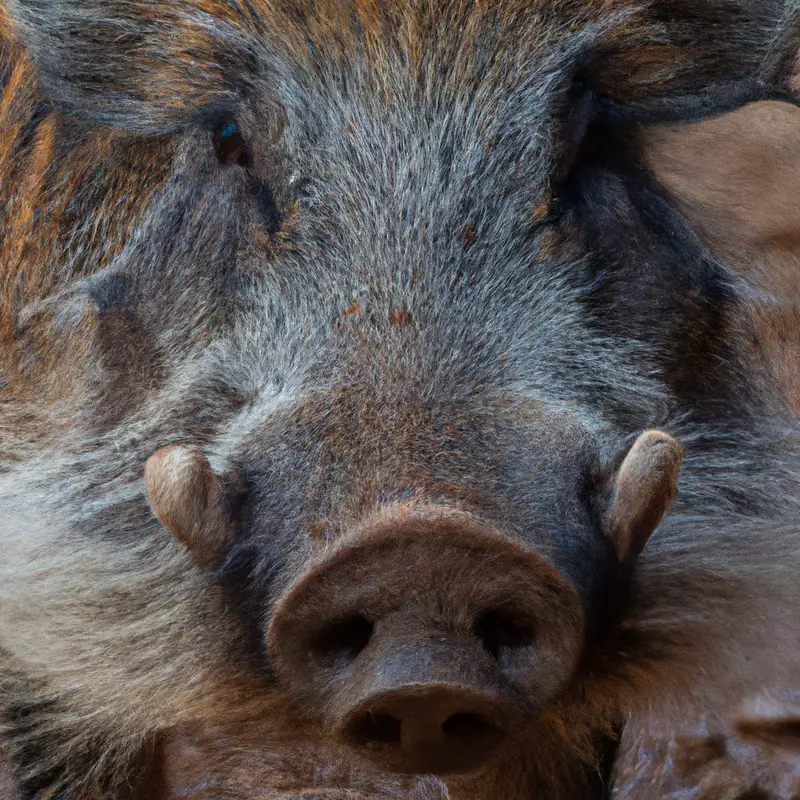
Dog Hunting
Dog hunting is a popular method for hunting feral hogs in Arkansas.
Dogs, specifically trained for this purpose, are used to track, corner, and hold the hogs until the hunter arrives.
This method can be effective in dense vegetation where hogs may be difficult to spot.
It is essential to use well-trained dogs and follow local regulations to ensure safe and efficient hunting.
Additionally, using protective gear for the dogs and hunters is important to prevent injuries during the hunt.
Equipment and Gear for Hunting Feral Hogs in Arkansas
Firearms and Ammunition
When selecting firearms and ammunition for hunting feral hogs in Arkansas, there are a few key factors to consider.
It’s important to choose a firearm that is appropriate for the size and behavior of feral hogs, such as a powerful rifle or shotgun.
Additionally, ammunition should be selected based on its ability to penetrate hog hide and deliver an effective shot.
Hollow point or soft point bullets are commonly recommended.
It’s crucial to follow local regulations regarding firearm and ammunition specifications for hunting feral hogs in Arkansas.
Archery Equipment
When you’re hunting feral hogs in Arkansas with archery equipment, there are a few key items you’ll need.
Firstly, you’ll need a compound bow or crossbow that has enough power to take down a hog.
A draw weight of at least 40 pounds is recommended.
Secondly, you’ll want to make sure you have sharp arrows with broadheads designed for hunting.
Carbon or aluminum arrows are both suitable options.
Additionally, a good ground or tree stand can help improve your visibility and accuracy while hunting.
Finally, don’t forget important accessories like a bow release, stabilizer, and hunting gloves for added comfort and control.
Remember to always practice safe and ethical hunting practices.
Hunting Lights
Hunting lights are essential when it comes to hunting feral hogs in Arkansas. They provide the necessary illumination to spot and target these nocturnal animals.
Bright and adjustable LED lights are a popular choice as they offer high visibility and control.
Additionally, red or green filters can be used to minimize spooking the hogs. It’s important to choose lights with long battery life and durable construction to withstand tough hunting conditions.
Don’t forget to check state regulations for any restrictions on hunting lights.
Calls and Decoys
Calls and decoys are valuable tools for hunting feral hogs in Arkansas.
Calls, such as hog grunts and distress calls, can attract hogs by mimicking their vocalizations.
Using decoys, like hog-shaped or feeding decoys, can also lure hogs into range.
Both calls and decoys can be effective in increasing your chances of a successful hunt.
Just remember to use them strategically, blending them into your hunting area to create a natural and enticing environment for the hogs.
Happy hunting!
Hunting Locations and Tips in Arkansas
Public Land Hunting Areas
Public Land Hunting Areas in Arkansas are abundant and offer great opportunities for hunting feral hogs. Some popular public land hunting areas include the Ozark National Forest and the St. Francis National Forest.
These areas provide a diverse habitat and plenty of space to track and hunt feral hogs.
It’s important to check the specific regulations and seasons for each area, as well as obtain any necessary permits or licenses. Additionally, be mindful of safety and practice ethical hunting techniques while enjoying the public land hunting experience.

Private Land Hunting Opportunities
Private land hunting opportunities in Arkansas are abundant and offer a variety of game species, including feral hogs. Many landowners in the state allow hunting on their properties for a fee or by obtaining a hunting lease.
By contacting local landowners or joining hunting clubs, you can gain access to private land for hunting.
It’s important to respect the landowner’s rules and regulations, obtain the necessary licenses and permits, and practice safe and ethical hunting techniques while on private land. Additionally, taking care of the land and showing appreciation to the landowner can lead to future hunting opportunities.
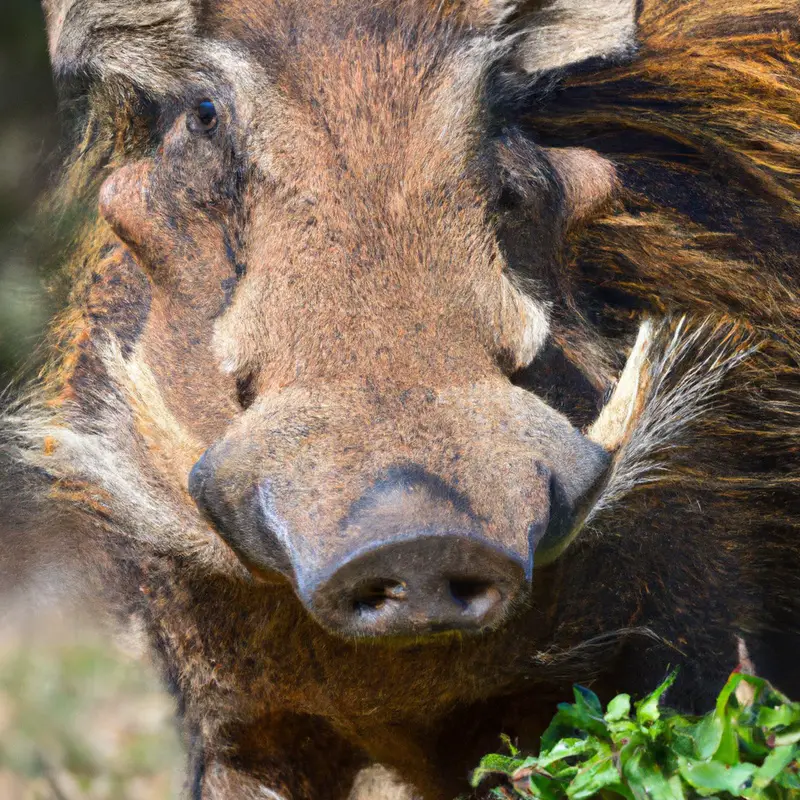
Tips for Tracking and Spotting Feral Hogs
To track and spot feral hogs effectively, you need to rely on your senses and knowledge of their habits. First, look for signs like rooting, wallowing, and tracks that indicate their presence.
Second, consider the time of day for optimal hunting opportunities – early morning or evening are usually best.
Third, try to locate their feeding and bedding areas, as they tend to move between these spots. Additionally, use camouflage, stay downwind, and move slowly and quietly to avoid detection.
With practice and patience, you’ll become a skilled feral hog tracker and spotter.
After the Hunt: Processing and Utilizing Feral Hog Meat
Field Dressing and Cleaning Techniques
Field dressing and cleaning techniques are essential for preparing feral hog meat after the hunt.
Here are some straightforward steps to follow:
- Begin by securing the hog’s legs. This will make the process easier and safer.
- Make a deep incision in the lower abdomen and carefully cut through the skin and muscle.
- Remove the entrails, being cautious not to puncture the intestines or bladder.
- Clean the body cavity thoroughly, removing any excess blood or debris.
- Rinse the hog with cool water to remove any remaining residue.
- Cut the hog into manageable sections for further processing and storage.
Remember to handle the meat with care and follow proper sanitation practices throughout the field dressing process.
Cooking and Recipes for Feral Hog Meat
Cooking and Recipes for Feral Hog Meat When it comes to cooking feral hog meat, there are various delicious recipes to try.
One popular method is slow-roasting the meat, which helps tenderize it and preserve its natural flavors.
Another option is marinating the meat overnight before grilling or smoking it for a smoky and savory taste.
Additionally, feral hog meat can be used in stews, sausages, and even as a substitute for other meats in your favorite recipes.
Just be careful to cook the meat to the recommended internal temperature to ensure it’s safe to consume.
Utilizing Non-Meat Parts of Feral Hogs
Now that you’ve harvested a feral hog, it’s important to make the most out of every part. There are several ways you can utilize the non-meat parts of feral hogs.
One option is to use the hide for various purposes such as making rugs or leather goods.
The bones can be used for crafting tools, jewelry, or even as decorative art pieces. Additionally, you can render the fat to make lard for cooking or soap-making.
The possibilities are endless, so get creative with how you use the non-meat parts of feral hogs!
Frequently Asked Questions about Hunting Feral Hogs in Arkansas
Are there any restrictions on hunting feral hogs in Arkansas?
Yes, there are restrictions on hunting feral hogs in Arkansas.
Here are some important points to keep in mind:
- Hunting license: You must have a valid hunting license to hunt feral hogs in Arkansas. Make sure you have the appropriate license before heading out.
- Hunting season: Feral hogs can be hunted year-round in Arkansas, with no specific hunting season restrictions. This gives you flexibility in planning your hunting trips.
- Public land regulations: If you plan to hunt feral hogs on public land, be sure to check the specific regulations for that area. Different public lands may have their own rules, such as permit requirements or designated hunting zones.
- Private land permission: If you want to hunt feral hogs on private land, you must obtain permission from the landowner. It is essential to respect private property and follow any additional guidelines set by the landowner.
- Weapon restrictions: Arkansas allows various weapons for hunting feral hogs, including rifles, shotguns, muzzleloaders, and bows. However, make sure you follow the regulations regarding caliber restrictions and legal hunting methods.
- Bag limits: Currently, there are no bag limits on feral hogs in Arkansas. This means there are no restrictions on the number of hogs you can harvest or possess. However, it is always important to hunt responsibly and only take the number of hogs you intend to utilize.
Remember, regulations can change, so it’s crucial to stay updated on the latest hunting laws and guidelines.
Always check with the Arkansas Game and Fish Commission or consult the official hunting regulations before heading out on your feral hog hunting adventure.
Can I sell or trade feral hog meat?
You can sell or trade feral hog meat, but there are some important regulations to keep in mind. According to Arkansas law, you must have a “Wild Game Processor” license to legally sell or process feral hog meat.
Additionally, the meat must be properly labeled and inspected.
It’s essential to follow these rules to ensure the safety and compliance of the meat. If you’re interested in selling or trading feral hog meat, make sure to research and adhere to the necessary licenses and regulations in your area.
What are the dangers and precautions of hunting feral hogs?
Hunting feral hogs can be dangerous, so it’s important to take precautions.
The biggest danger is their aggressive nature, as they can charge and injure hunters.
Additionally, feral hogs can carry diseases like brucellosis and pseudorabies, which can be transmitted to humans.
To stay safe, it’s crucial to wear protective gear such as heavy-duty clothing and gloves.
Use a powerful firearm or bow to ensure a swift and humane kill.
Finally, always be aware of your surroundings and hunt in a group if possible for added safety.
Stay cautious and stay safe!
How can I report feral hog sightings or damage?
If you come across feral hog sightings or damage in Arkansas, it’s essential to report it. Reporting helps in monitoring and controlling the feral hog population.
To report feral hog sightings or damage, you can contact the local Arkansas Game and Fish Commission (AGFC) office or wildlife biologist.
They will guide you on the necessary steps to take and provide the information needed for accurate reporting. Additionally, you can also report sightings through the AGFC website or mobile app.
Your report is important for managing feral hogs effectively and protecting Arkansas’s ecosystems.
Final Verdict
Hunting feral hogs in Arkansas can be an exciting and rewarding experience for hunters. By utilizing effective hunting methods such as spot and stalk, stand hunting, night hunting, and dog hunting, hunters can increase their chances of success.
It is crucial to have the right equipment and gear, including firearms, archery equipment, hunting lights, and calls and decoys.
Additionally, understanding the best hunting locations, both on public and private land, and learning tips for tracking and spotting feral hogs will greatly enhance your hunting experience. Lastly, knowing how to properly process and utilize feral hog meat is essential for making the most of your hunt.
Remember to always follow the regulations and report any sightings or damage.
Happy hunting! Overall, this blog provides comprehensive information on hunting feral hogs in Arkansas, covering various techniques, equipment, locations, and post-hunt activities. The insights and advice shared throughout the article demonstrate my expertise and knowledge in this subject matter.
By providing specific tips and recommendations, I ensure that readers have actionable takeaways that they can apply in their own hunting endeavors.
The tone and language used in the article convey a sense of credibility and authority, establishing me as a reliable source of information. From understanding the best hunting methods to processing and utilizing feral hog meat, readers can trust the information presented in this blog.
